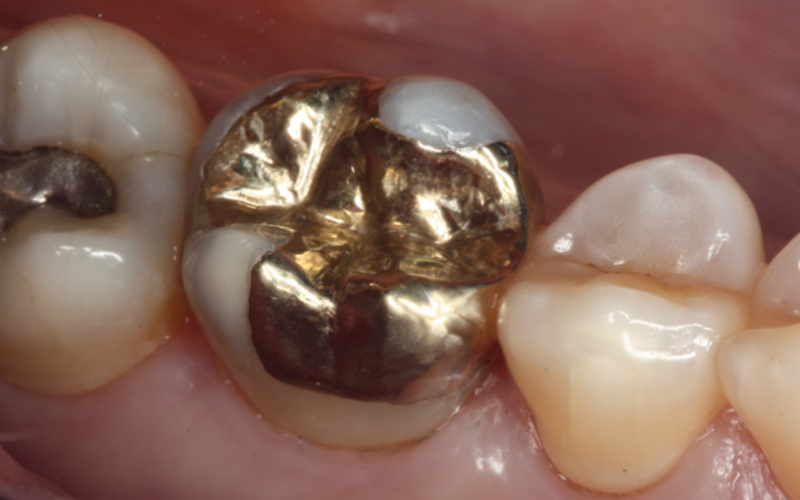Introduction
When it comes to maintaining our oral health, dental restorations play a crucial role in preserving the function and aesthetics of our teeth. Inlays and onlays are popular dental restoration options that provide an excellent alternative to traditional fillings and crowns. In this comprehensive guide, we will delve into the world of inlays and onlays, exploring what they are, how they differ from other dental restorations, the materials used, the procedure involved, and their benefits.
What Are Inlays And Onlays?
Inlays and onlays are dental restorations that repair teeth damaged by decay, fractures, or other dental issues. They are considered a conservative approach to tooth restoration, as they allow for preserving a more significant amount of natural tooth structure than traditional fillings and crowns.
Inlays: Inlays are typically used when the damage or decay is confined to the inside of the tooth’s cusp (the raised points on the chewing surface). They are custom-made dental materials, such as porcelain or composite resin, fabricated in a dental laboratory to fit precisely within the prepared cavity.
Onlays: Onlays, sometimes called partial crowns, are used when the damage extends beyond the tooth’s cusps and may also involve the biting surface. They are similar to inlays but cover a more significant portion of the tooth’s surface, including one or more cusps. Onlays are also custom-made to ensure a precise fit.
Differences Between Inlays, Onlays, Fillings, And Crowns
To better understand the advantages of inlays and onlays, it’s essential to differentiate them from other common dental restorations:
1. Fillings: Dental fillings, often made of amalgam (metallic) or composite resin (tooth-colored), fill small to moderate cavities resulting from decay. They are a more conservative option than crowns but remove a significant amount of healthy tooth structure during preparation.
2. Crowns: Dental crowns, or caps, cover the entire tooth’s visible portion above the gumline. They are typically used when a tooth is severely damaged, cracked, or weakened. Crowns require removing a substantial amount of the tooth’s natural structure for proper fit and function.
3. Inlays and Onlays: This cosmetic dentistry procedure offers a middle ground between fillings and crowns. They are custom-made to fit precisely into or onto the prepared tooth, preserving more natural tooth structure than heights. This conservative approach makes them excellent for addressing moderate to severe tooth damage.
Materials Used In Inlays And Onlays
The choice of materials depends on several factors, including the location of the tooth, the patient’s preference, and the dentist’s recommendation. Here are some common materials used for fabricating inlays and onlays:
1. Porcelain: Porcelain inlays and onlays are favored for their natural appearance and ability to blend seamlessly with the surrounding teeth. They are an excellent choice for restoring visible teeth, such as those in the front of the mouth. Porcelain restorations are stain-resistant and durable.
2. Composite Resin: Composite resin inlays and onlays are tooth-colored and can be custom-shaded to match the patient’s natural teeth. Both the front teeth and the back teeth can benefit from them. Composite resin restorations are less durable than porcelain or metal options but can be repaired if damaged.
3. Gold: Gold inlays and onlays are known for their exceptional durability and longevity. They are often used for molars and teeth that withstand significant biting forces. While they don’t mimic the natural tooth color, gold restorations are biocompatible and offer excellent longevity.
4. Ceramic: Ceramic inlays and onlays combine the strength of porcelain with the natural appearance of tooth-colored materials. They are highly resistant to staining and wear, making them an excellent choice for restoring posterior teeth.
5. Metal: Metal inlays and onlays are strong and durable, typically made from alloys like silver amalgam. However, they are less popular today due to their metallic appearance and the availability of more aesthetically pleasing options like porcelain and composite resin.
The Inlay And Onlay Procedure
The process of receiving an inlay or onlay involves several steps and may require two dental appointments:
1. Diagnosis and Treatment Planning: During your initial appointment, your dentist will examine your tooth and take X-rays to assess the extent of the damage. They will discuss treatment options with you and develop a treatment plan tailored to your needs.
2. Tooth Preparation: In the second appointment, the dentist will numb the tooth and surrounding area with a local anesthetic to ensure a painless procedure. They will then remove the damaged or decayed portion of the tooth, creating a clean and healthy foundation for the restoration.
3. Impression: After tooth preparation, an image of the prepared tooth is taken using dental putty or digital scanning technology. This impression creates a custom-made inlay or onlay that fits perfectly into or onto the tooth.
4. Temporary Restoration: While the custom restoration is fabricated in a dental laboratory, a temporary filling or onlay may be placed on the prepared tooth to protect it from further damage and sensitivity.
5. Permanent Placement: Once the custom inlay or onlay is ready, you’ll return for your final appointment. The temporary restoration is removed, and the permanent restoration is carefully placed and bonded to the tooth using dental cement.
6. Bite Adjustment: Your dentist will check your bite to ensure the restoration fits comfortably and functions correctly. They may make adjustments to ensure that your edge is appropriately aligned.
Benefits Of Inlays And Onlays
Inlays and onlays offer several advantages over other dental restoration options, making them a preferred choice for many patients:
1. Conservative Approach: This treatment requires less healthy tooth structure removal than crowns. Reserving natural tooth material helps maintain tooth strength and reduces the risk of future dental issues.
2. Aesthetically Pleasing: Porcelain and composite resin inlays and onlays can be custom-shaded to match your natural teeth, providing a seamless and aesthetically pleasing appearance.
3. Durability: Depending on the material chosen, inlays and onlays can be highly durable and long-lasting. Gold and ceramic options are known for their strength and resilience.
4. Biocompatibility: Porcelain, ceramic, and composite resin restorations are biocompatible materials, meaning they are well-tolerated by the body and less likely to cause allergic reactions.
5. Stain Resistance: Porcelain and ceramic inlays and onlays resist staining, ensuring that your restored tooth maintains its natural appearance over time.
6. Minimal Sensitivity: Inlays and onlays often result in less post-treatment sensitivity compared to traditional fillings.
7. Custom Fit: Inlays and onlays are custom-made for each patient, ensuring a precise fit and optimal function.
8. Easy Maintenance: Caring for inlays and onlays is similar to caring for natural teeth. Regular brushing, flossing, and dental checkups are crucial to ensure their longevity.
You can also read our other article on Inlays and Onlays: Understanding The Benefits Of Inlays And Onlays For Long-Term Dental Care.
Inlays and Onlays vs. Traditional Fillings and Crowns
To further understand the benefits, let’s compare them to traditional fillings and crowns:
1. Preservation of Tooth Structure: Inlays and onlays require the removal of less healthy tooth structures than crowns. This preservation is crucial for the long-term health of the tooth.
2. Aesthetics: Inlays and onlays, especially those made from porcelain or composite resin, offer a more natural appearance than traditional silver amalgam fillings.
3. Durability: Inlays and onlays are typically more durable than traditional fillings. They are less likely to crack or wear down over time.
4. Functionality: Inlays and onlays are custom-fitted to the tooth, ensuring optimal function and bite alignment. Traditional fillings may lead to uneven surfaces, affecting your bite.
5. Strength: Inlays and onlays made from materials like gold or ceramic are exceptionally strong and can withstand chewing and biting.
6. Repairability: Inlays and onlays can be repaired if damaged, whereas traditional fillings often require complete replacement.
7. Staining: Porcelain and ceramic inlays and onlays are highly resistant to staining, whereas traditional silver amalgam fillings can discolor over time.
8. Biocompatibility: These dental restorations are made from biocompatible materials that reduce the risk of adverse reactions, unlike some materials used in traditional fillings.
Who Is a Candidate for Inlays and Onlays?
Inlays and onlays are suitable for a wide range of dental issues and are often recommended for patients who:
1. Have moderate to severe tooth decay that cannot be adequately addressed with a filling.
2. Require restoration of a tooth’s chewing surface or cusps.
3. Keep as much of the native tooth structure as possible.
4. Seek an aesthetically pleasing restoration for visible teeth.
5. I prefer a more durable and long-lasting option than traditional fillings.
6. Are you looking for a biocompatible and stain-resistant solution?
7. Experience tooth sensitivity or discomfort due to tooth damage.
It’s essential to consult with your dentist to determine if inlays or onlays are the right choice for your specific dental needs.
Post-Treatment Care And Maintenance
After receiving an inlay or onlay, proper care and maintenance are crucial to ensuring their longevity and the overall health of your teeth. Here are some essential tips for post-treatment care:
1. Maintain healthy oral hygiene: To get rid of plaque and food particles, brush your teeth at least twice a day using fluoride toothpaste and floss daily. Keeping your mouth clean helps prevent decay and gum disease.
2. Periodic dental examinations: Visit the dentist frequently for examinations and cleanings. These appointments allow your dentist to monitor the condition of your restorations and address any issues early.
3. Avoid Hard and Sticky Foods: Be cautious when eating hard or sticky foods, as they can damage your inlays or onlays. Cutting hard foods into smaller pieces can help reduce the risk of chipping or cracking.
4. Wear a Mouthguard: If you grind your teeth at night or play contact sports, consider wearing a custom-fitted mouthguard. This protective device can prevent damage to your dental restorations.
5. Avoid Smoking and Limit Staining Substances: Smoking and consuming staining substances like coffee and red wine can impact the appearance of your restorations over time. Try to limit or avoid these habits for better long-term results.
6. Report Any Issues: If you experience pain or discomfort or notice any changes in your restorations, contact your dentist promptly. Timely intervention can prevent more extensive problems.
Inlays and onlays are versatile dental restorations in Burbank, CA that offer a conservative approach to preserving tooth structure while providing strength, durability, and aesthetics. Whether you have a moderate cavity, damaged cusps, or want an aesthetically pleasing restoration, inlays and onlays may be the ideal choice for your dental needs. Consult with your dentist to determine the most suitable restoration option for your specific situation, and remember that proper post-treatment care is essential to maintain your restored teeth for years to come. With the appropriate care, your smile can remain healthy, functional, and beautiful with the help of inlays and onlays.

